The Bibliophile Aesthetic Is the Best Way to Show off Your Beloved Books
Self-proclaimed bibliophiles and design experts weigh in on the trend that is turning a passion into a decor style.
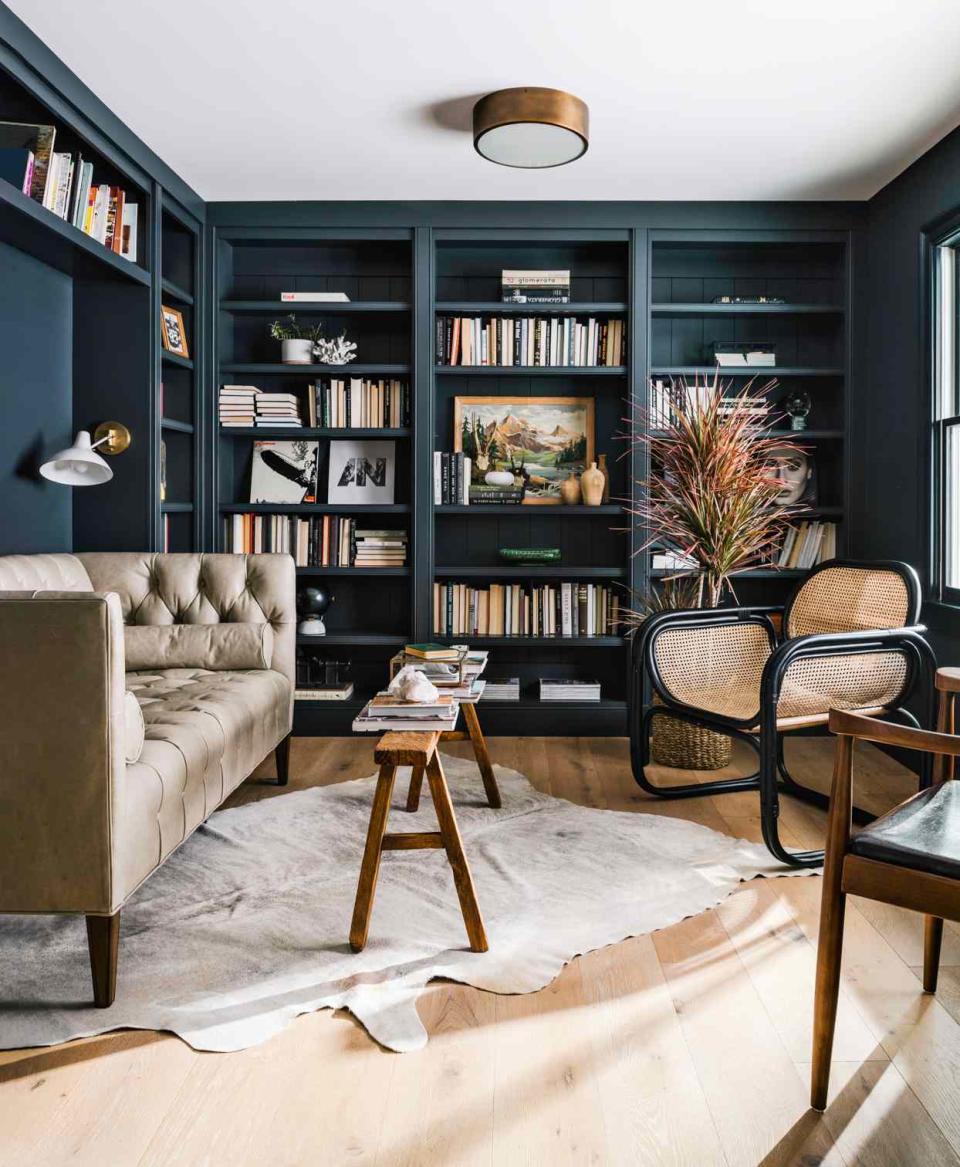
When it comes to choosing a decor style for your home, it’s important to choose something that reflects your personal interests and lifestyle as well as your taste in decor. If you’re an avid reader and book collector, there’s a cozy aesthetic that will be right up your alley: bibliophile decor.
For those who haven’t heard the term before, a bibliophile is described as someone who collects or has a great love of books. This decor trend is aptly named because it’s all about featuring books prominently in your home and decor. We’re not talking about a few random coffee table books that you have no plans on actually reading (although there’s a time and a place for those, too) or a solitary reading corner, though both can play into bibliophile decor. No: Bibliophile decor is all about a deep love and appreciation of books and reading and translating that passion into a key component your home decor.
So what exactly is bibliophile decor, and how can you achieve a bibliophile aesthetic in your home? We spoke to a few bibliophiles and design experts to get their input on this cozy, book-oriented design trend.
:
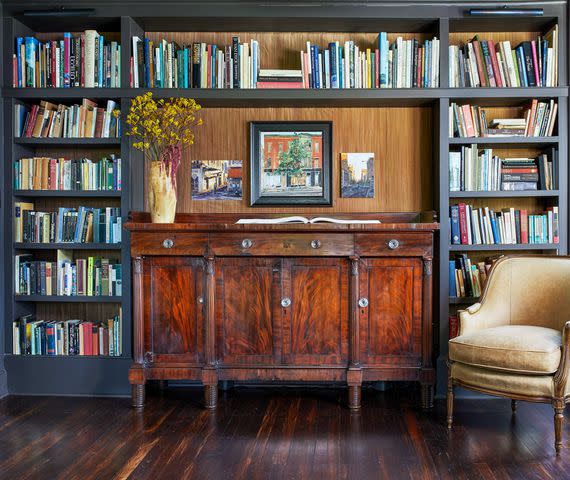
What Is Bibliophile Decor?
Put simply, bibliophile decor is an interior decorating aesthetic that features books and book collections prominently. However, there’s much more to it than that.
Sarah Barnard, lead designer and owner of Sarah Barnard Design LLC, describes the bibliophile aesthetic as one that “fosters a space that expresses an appreciation of books and maximizes the reading experience.”
This means that bibliophile decor usually extends beyond just displaying books to ensuring that the space is cozy and functional for reading, as well. And unlike other decor trends or fads, including the very similar dark and light academia trends, the bibliophile aesthetic encapsulates an entire lifestyle, not just a visual aesthetic.
Norma Fabian Newton, lifelong book lover and founder of Latinx-focused bookseller and publisher Fabian Flores Publishing, puts it succinctly: “The bibliophile interior aesthetic is all about learning to live authentically and beautifully with books you love,” she says.
:
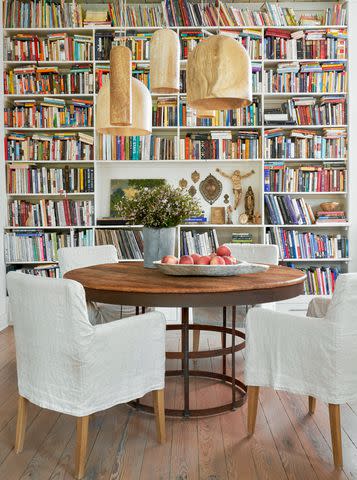
Why Bibliophile Decorating Is So Popular Right Now
In the digital age of e-readers and online manuscripts, the trend of decorating with books may seem surprising or antiquated to some. However, for book lovers and people who are craving a space that is cozy and comforting, the bibliophile aesthetic is a natural choice. Books offer an escape from the daily stresses of life and allow us to figuratively walk in someone else’s shoes for a while. Even when you aren’t nose-deep in a book, just being around books can evoke that same sense of comfort and calm.
“[Books] lend an extremely nostalgic feel to my space,” says self-described bibliophile and booktoker Shelby Zang (@bookgasmtheclub on TikTok). “[They] are the one thing that has always remained a constant in my life, from when I was little choosing the book I wanted my mom to read to me before bed to now, finding the perfect book in my collection for my online book club to read that month.”
Besides the comforting and nostalgic aspect of decorating with books, Barnard points out that for book lovers and collectors, “finding creative ways of incorporating books into a home space helps with the organization of the book collection and the home.” Let’s face it, you can only stack your books in the corner for so long before it will start to get out of hand!
:
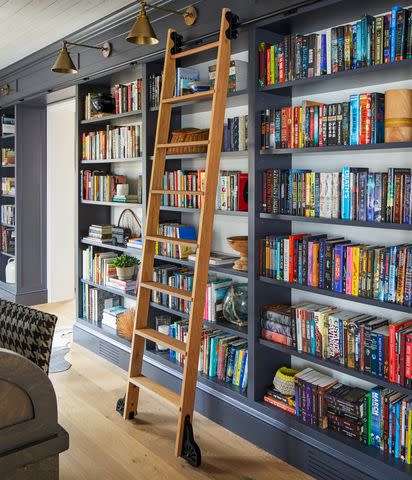
How to Achieve the Bibliophile Aesthetic
1. Choose books that reflect your interests.
While it may seem obvious, it still needs to be said—choose books that you truly enjoy! Including books in interior decorating is a universal trend right now (coffee table books are big!), but the key to achieving authentic bibliophile decor is to feature books that you truly love and cherish. “Buy books that reflect your interests and only keep books that you love,” Newton says. Crowding your space with books that you don’t really love or plan on reading (shall we say, books that don’t spark joy), will result in a space that feels cluttered and overwhelming in time (and not in a nice cluttercore way).
2. Don’t rush the process.
Let’s face it—building up a book collection takes time, effort, and money (even if you are buying second-hand!). If your dream is to one day mistake your home for a library or bookstore, the best thing you can do is take it slowly and build your collection intentionally. “Memorable bibliophile interiors take time to create,” Newton says. “Build yours consciously, and don’t be afraid to take book recommendations!”
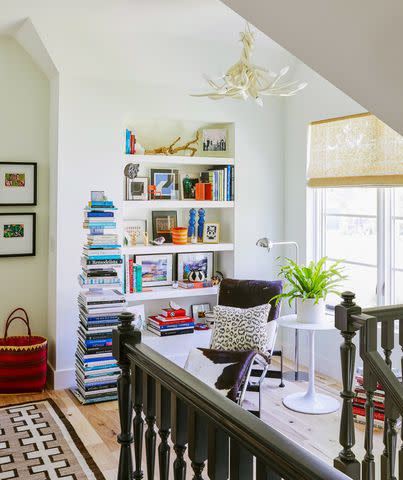
3. Dedicate space to your books.
Carving out dedicated space for your books is important when going for a bibliophile aesthetic. Not only does it keep things looking organized and intentional, but it also helps to really display your books in all their glory. Depending on the space you have, this could range from creating a specialized reading room or library to installing some floating shelves in your living room, Barnard says.
4. Make it your own.
It goes without saying that the key to a good bibliophile aesthetic is books (and a lot of them). Once you have the books covered, the rest is really up to you! For example, if you love loud, colorful spaces, then perhaps organizing your books by color is something that will appeal to you. On the other hand, if you prefer more neutral palettes, you can always remove the colorful paper jackets from hardcover books or display some of your collection with the spines facing inwards (pages out) to reduce some visual overwhelm, Zang recommends.
“Don’t be afraid to let your culture and creativity coexist with your books,” Newton says. As a Latinx-focused bookseller, she is passionate about weaving together her culture, interests, and book collection to create meaningful spaces in her home. This may mean displaying your books alongside art that reflects your culture or choosing to prominently display books that are written by your favorite authors.
5. Allow room for negative space.
The key to keeping any shelf display from becoming visually overwhelming is to allow some room for negative space to give the eyes a break. Barnard suggests balancing the books with beloved personal objects to create that negative space, which will “contribute to the artistry of the display and keep it feeling intentional,” she says.

